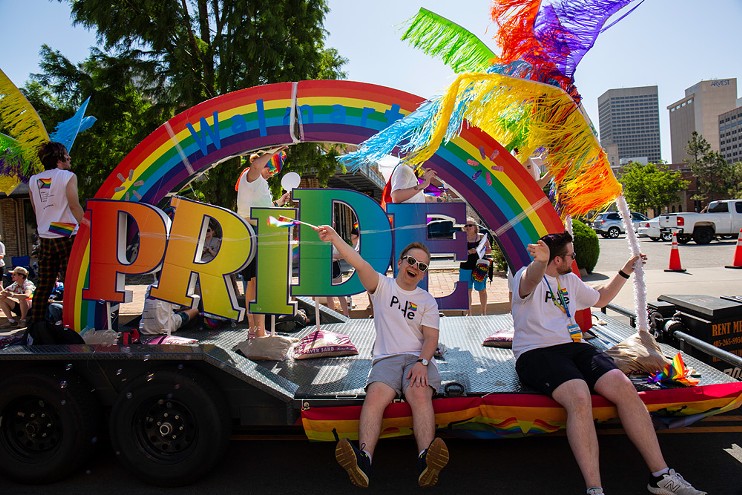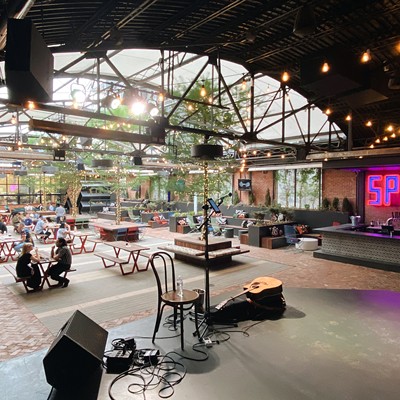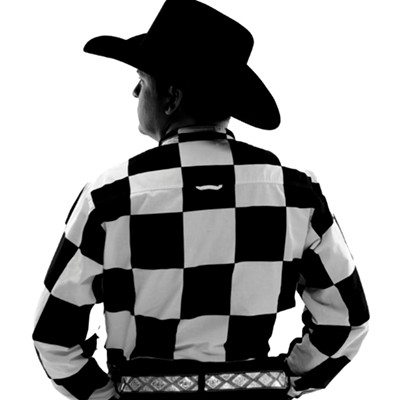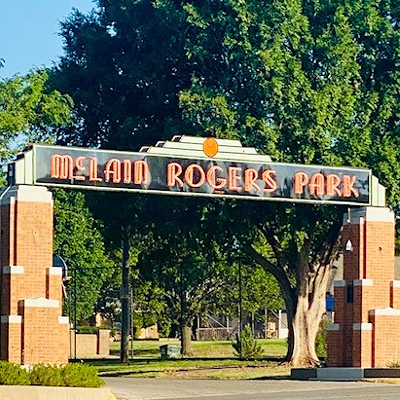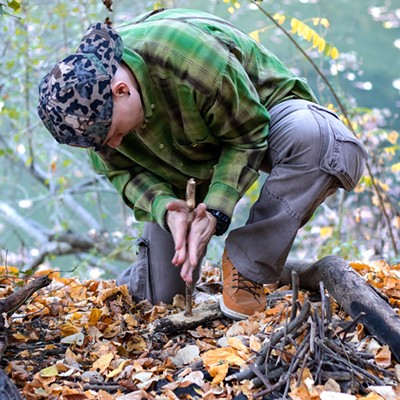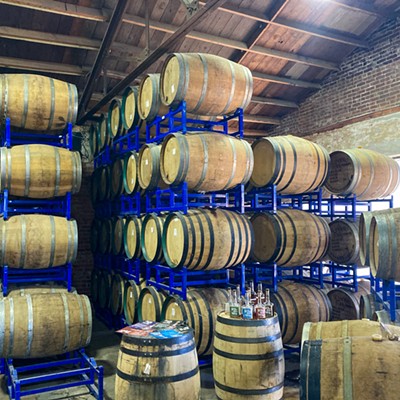The queer community is under attack.
Every week — sometimes every day — we’re seeing new legislation, new rhetoric or talking points, new book bans and new pushback against the decades of progress made toward something like acceptance or solidarity, in particular targeting trans youth and gender-affirming care.
As state legislatures and courts nationwide continue to codify these regressive, targeted policies, Oklahoma has leapt into the fray with no fewer than four such anti-trans bills and is already loudly signaling that even more political toxicity is on the horizon.
But so is Pride.
Each year, across the country and beyond, the month of June sees parades, performances, and outpourings of support in the name of Pride, the open celebration of the unified gay, queer and transgender communities.
But for all of the rainbow-colored, increasingly non-threatening fun for which Pride Month has become known, its origins trace back through a tragic and difficult history of oppression, intolerant violence and ultimately outright protest in the name of demanding basic human equality regardless of identity or orientation.
With the same fights and bigotries now recycling back into the public discourse, and with the trans community fighting, in many cases, for their very lives, this year’s Pride celebrations around Oklahoma City are set to more closely resemble those earlier days.
“Pride means never forgetting that this protest must continue,” said Tessa White, President of OKC Pride, and the first transgender president in the longstanding organization’s history. “As much as we would love to celebrate, we really can’t this year. So instead, what we want to do is just continue this protest.”
The Body Politic
After the worrying political upheaval and fundamentalist conservative empowerment of the past few years, tensions heading into this year’s Pride feel more charged than potentially in decades.
State officials like Gov. Kevin Stitt and State Superintendent of Public Instruction Ryan Walters have staked much of their recent political capital on attacking gender-affirming healthcare and 2SLGBTQ-inclusive children’s books, backing and encouraging a slate of bills in the state legislature.
“Fortunately — and frankly, we don’t even know how it happened — but we managed to only have one bill actually get signed into law this year, and that would be the bill excluding trans youth from having care within the state of Oklahoma,” White said.
That bill, Senate Bill 613, has so far been the most successful of the openly anti-trans legislation floating through the state government, but it hasn’t been alone. Separate bills also targeting transgender-related healthcare, birth-gender bathroom designations, and strict legal definitions of what is allowed to be called a “woman” have also made the rounds just this year.
Then there’s the efforts to outlaw drag performance.
Following in the backwards-facing footsteps of Tennessee, Republican lawmakers in Oklahoma have tried to make visible public drag shows into a felony offense.
“We so often express ourselves politically through performance,” said Plaza District Executive Director Rachael Leonhart, who is also the lead organizer for their annual PRIDE on the Plaza event.
“So much of our culture revolves around the art of drag,” Leonhart said. “And now there are politicians at the Capitol trying to claim things like, ‘I could be downtown, walking with my family, and then all of sudden there’s drag queens!’”
The unifying theme at each of OKC’s large-scale Pride events this year is encouraging political action, both to block and stall these pending bills and to hopefully reverse or nullify the already-signed law keeping trans youth from potentially life-saving gender-affirming treatment.
“We’ve been lucky enough to have some people within the legislature that actually are good people, that actually care about what happens to the LGBT community,” White said. “But we’re very sad, because there are so many transgender youth that are suffering right now, and not only suffering, but being discriminated against in schools, being bullied. Many of them are having to move out of state.”
“At its foundation”
These scenarios have begun to feel frighteningly familiar to anyone aware of the blatantly anti-gay laws and mentalities of the 1960s and the tragic, explosive circumstances that Pride itself was created to memorialize.
On June 28, 1969, police violently raided the Stonewall Inn in New York’s Greenwich Village, a popular, if necessarily hidden, gay bar, sparking one of the first major clashes and uprisings against anti-LGBT laws and discrimination.
The violence lasted for days, resulting in further clashes with police, mass arrests and fire being set to the Stonewall Inn.
One year later, gay rights activists in Los Angeles, Chicago, and right there in Greenwich Village marched in the very first official “Gay Pride” parades to commemorate the Stonewall Uprising.
By June of 1971, the parades had spread across the country as mass, coordinated protests with marchers demanding equal rights, equal treatment and an end to the lingering homophobic laws that outlawed, in many cases, even the right to openly identify as anything but straight.
The marchers’ most important political strength was their numbers.
On the front lines of the Stonewall riots that night, and helping to lead and organize the community in the aftermath were a number of instrumental Black trans activists, such as Marsha P. Johnson, Miss Major Griffin-Gracy, and Stormé DeLarverie.
“Pride is a protest at its foundation,” White said. “Since 1969, we’ve come an awful long way, but with the last couple of years, we’ve slipped backwards by decades. So it’s just a little emblem hanging around our neck that says, ‘Don’t forget where you came from, and don’t ever let your guard down.’”
Oklahoma City didn’t see an open, official Pride march until 1988.
Historical Need
These histories are told and recounted every year throughout the community, with leaders and organizers hoping to keep that original revolutionary spirit alive during Pride Month.
But for so many casual allies and young newcomers to the 2SLGBTQ+ identity, it’s been difficult to see through June’s expected, arms-length “rainbow capitalism” to understand that Pride still represents solidarity against a serious threat on an entire worldwide community.
“We should probably have a real place in OKC where we can learn about our history,” Leonhart said. “We don’t have a brick-and-mortar 2SLGBTQ+ establishment in this city where we can learn, and we really should, someplace that’s not just a bar or a pop-up in someone’s home. Just like we don’t have a consistent, reliable publication or outlet giving updates in real time.”
So many of the hopes for that kind of multi-generational, financially supported community were dashed in the 1980s.
“Organizations need funding,” said Leonhart. “Any chance that we had in the queer community of having generational wealth and power, any head start that we had, was wiped out in the AIDS crisis. All of our straight-passing white men, they all got HIV and AIDS and then passed. It’s really, really sad. And now we’re trying to rebuild that.”
Much of that rebuilding has settled into the infrastructure and economy of the 39th Street District, nationally recognized as one of the largest and most diverse gay districts in America.
Though it may seem to some like a surprising outlier in a notoriously conservative state, its community has become galvanized and successful out of necessity.
“We need places like 39th Street because when you’re part of a marginalized community, there’s a certain camaraderie in just being with each other,” Leonhart said. “There’s a saying that adversity breeds community. The reason why Oklahoma City has such thriving gay establishments is because the rest of Oklahoma is so against us. There has to be a safe haven somewhere.”
Unite the Fight
The 39th Street Pride Parade, organized by OKC Pride, remains the largest privately held event in the city with as many as 100,000 participants each year.
“If that’s not sending a message,” White said, “I don’t know what is.”
As the president of OKC Pride, White has her work cut out for her to create a mammoth multi-day event with enough fun and appeal to bring out the crowds while also striking the challenging tone of protest, solidarity and calls for desperately needed political action.
“This year, our theme had to be specific and it had to be protest-minded,” she said, “and we heard the suggestion of ‘Unite the Fight.’ As soon as we heard it, it was absolutely perfect. It’s just a constant reminder that we are in a fight for our lives, and that we should just never forget. Like, let’s have fun, let’s enjoy each other’s company, let’s celebrate who we are. But let’s not forget.”
Under that banner, OKC Pride hopes to bridge the gap between party-starved supporters and politically minded protesters by framing the fight as one of inclusion, with visibility itself as the most powerful weapon.
“Pride means that we’re still here,” White said. “We look around at one another, and we realize that we’re all still here together, and that our strength is in numbers. And those numbers are just growing exponentially right now.”
Queer Joy: The Resistance
Many of those growing numbers can be seen spreading out across the city, bringing that same message of open-armed inclusion in the fight into new venues and new, increasingly visible parts of the city.
“There’s so many of us here in Oklahoma, and it’s such a beautiful reminder,” said Kylan Durant, president of the more recently established OKC Pride Alliance, organizers of the already wildly popular PrideFest celebrations at Scissortail Park.
“If we could just remember that every single day when we’re in the midst of all of this,” Durant said. “Just remember looking out on that Friday or that Saturday during Pride, and there’s this massive sea of queer people out there to just celebrate and be together.”
For their Pride theme this year, they chose “Queer Joy: The Resistance,” openly signaling that, as their website directly states: “CELEBRATION IS A PROTEST.”
“To live joyously in the midst of all of this is an act of rebellion and an act of resistance,” Durant said. “And just having the Pride festival is one of the biggest displays of that.”
Unfortunately, Durant has seen cracks forming in some parts of the community that wish to compartmentalize the struggles and to focus on the successful social gains rather than the work to be done.
“We have a pretty big divide happening in the community with the trans issues going on,” he said. “There are some queer people who are not fully behind the trans movement, and that’s very disappointing to see. I actually had a conversation the other day about followers on our accounts and how anytime that we’ve posted something about SB613, we’ve seen a dip in our number of followers, like a significant dip. And so we’re definitely being aware of who is supporting us, because we have people showing up to the table who don’t support the whole community and especially the parts of our community that are even more marginalized.”
“A Middle Finger”
Leonhart, who is also a board member for OKC Pride Alliance, feels that it’s her job to keep the rebellious, revolutionary spirit of Pride’s history alive.
“The things that I’m not supposed to book, or that aren’t supposed to be allowed, I do it anyway,” she said. “I give a middle finger through programming. When they say we can’t have drag performers or we can’t have pasties? Yes we can. When they say we can’t talk about sex? Yes we can. We can’t give resources to families for trans health? Yes we can, and we will, and we won’t apologize for it.”
Of course, that kind of conscious rebelliousness unfortunately carries some serious, somber considerations, especially as some other cities around the country are already canceling official Pride celebrations out of fear.
“As a festival organizer, I have to ask if, in an attempt to create a safe space and a place where people can be seen and heard, am I actually in some way creating a target in the political climate that we’re in?” Leonhart said. “I’ve quadrupled security over the last year for PRIDE on the Plaza and PrideFest at Scissortail. We’ve spent nearly $20,000 just on security. And it’s like, well then why do we even do it? But it’s for a lot of reasons. I mean, when someone tells you it’s their first Pride or that they really feel seen and understood for the first time, that means something.”
“A Place for Everybody”
For all of the current political weight and all the revolutionary hopes for Pride this year, all of these organizers are clear that the overriding culture of fun and inclusivity remains paramount.
“It’s got to be exciting,” White said. “It’s got to be fun and a safe place for all of our community members to see what it looks like to be out and proud.”
Whether you’re drawn to Pride this time around to help make a loud, proud statement of political support, or just to show solidarity by adding your number, all good intentions will be welcomed.
“There’s a place for everybody, and not everyone’s place is throwing bricks. There’s levels to it. Some of us are supposed to be the activists, the ones that are perceived as always angry or always loud. And then some of us are supposed to be the mediators. We have people from all backgrounds and all walks of life. We just have to trust,” Leonhart said.
We can all hope that next year might be different, that the spirit and energy of Pride can return again to unified joy and celebrations of progress and acceptance, but this year, everyone who shows up will be standing for something, even if it’s just to be counted.
“It’s about saying ‘this isn’t right,’” Leonhart said. “This is not right, and the people who came before us fought way too hard for all of this.”

